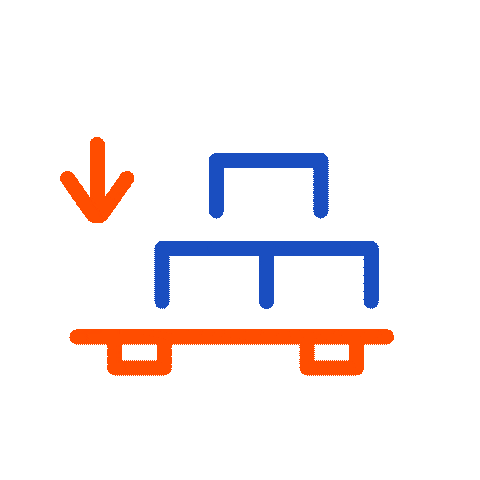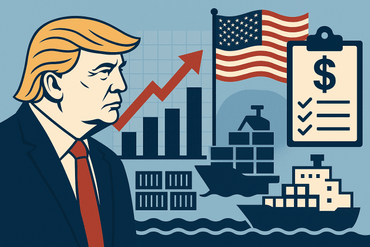
Maritime, Shipping & Port Glossary



A. Maritime Freight
Basic Freight
Cost of maritime transport between ports according to shipping terms.
Liner Terms
Includes loading, stowage, unstowage, and discharge; excludes pre- and post-hook costs.
F.I. (Free In)
Shipper pays for loading; stowage and discharge are included in the freight.
F.I.O.S.T.
Same as F.I., but grain trimming is covered by the shipper.
F.I.O.S.
Loading, discharge, and stowage are paid by the shipper.
F.I.L.O. (Free In, Liner Out)
Loading paid by the shipper; discharge paid by the carrier.
L.I.F.O. (Liner In, Free Out)
Loading paid by the carrier; discharge paid by the shipper.
F.I.S.L.O.
Loading and stowage paid by the shipper; discharge under liner conditions.
All-In Freight
Includes all loading/unloading, stowage, and haulage to terminal operations.
B. Container Transport
Intermodal Service
Transport between two points using two or more modes.
Door Service
Carrier handles door-to-door transport and empty container movements.
Port Service
Carrier transports between ports; user covers origin/destination and empties.
House to House
Exporter manages complete transport to final destination.
House to Pier
Exporter manages transport up to loading onboard at origin port.
Pier to House
Importer manages transport from vessel arrival to final destination.
CY (Container Yard)
Area for receiving, delivering, and storing containers.
C. Container Loading and Unloading
FCL (Full Container Load)
Full container; customer loads, stows, and counts the cargo.
LCL (Less Container Load)
Carrier consolidates and stows cargo from multiple customers at its depot.
Combinations
FCL/LCL · LCL/FCL · LCL/LCL
D. Bill of Lading Surcharges
THC (Terminal Handling Charge)
Charge for terminal handling; covers hook-to-terminal movement.
BAF (Bunker Adjustment Factor)
Fuel adjustment surcharge.
CAF (Currency Adjustment Factor)
Adjustment due to currency fluctuations.
HCS (Hazardous Cargo Surcharge)
Surcharge for dangerous goods per IMO code.
E. Port and Customs Terms
Grouped by category for easier reading.
Operations and Spaces
Berthing Alongside: Mooring one vessel to another.
Berthing / Unberthing: Moving a vessel to/from the quay.
Mooring / Unmooring: Securing/releasing mooring lines.
Anchoring / Anchorage Area: Keeping a vessel at an authorized point.
Entrance/Exit Channel: Natural or artificial maritime access.
Water Operations Area: Maneuvering area between docks and breakwaters.
Quay / Breakwater: Infrastructure to operate vessels and protect the port.
Transit Area: Temporary area between vessel and land transport.
Cargo and Units
Cargo: Goods transported by vessel.
Consolidated Cargo: Grouping cargo under one document.
Transit / Transshipment / Re-export Cargo: Movements without nationalization.
Bulk (Solid/Liquid): Unpackaged goods; liquids via pipelines.
Breakbulk Cargo: Packaged or loose cargo.
Ro-Ro Cargo: Vehicles/equipment with wheels.
Pallet: Support for bagged cargo.
Stacking / Stowage / Unstowage / Piling: Placing and removing cargo.
Documentation and Contracts
Bill of Lading (B/L)
Document proving possession/ownership and transport terms.
Cargo Manifest
List of goods onboard.
DUA / DUIM
Documents for customs regimes and manifest filing.
Shipment Order
Requirement for final export clearance.
Transport / Charter Contract
Agreements to move cargo or lease a vessel.
Actors and Roles
Shipowner: Owner or operator of the vessel.
Carrier / Transporter: Responsible for maritime transport.
Customs Broker: Represents consignees/owners before Customs.
Shipping Agent: Represents carrier at port terminal.
Port Operator: Provides services to vessels/cargo/passengers.
Port Administrator / Port Company: Manages port infrastructure.
Port User: Intermediate or final user of port services.
Port Infrastructure and System
Port Terminal (Public/Private): Operational area with infrastructure.
Port Facility / Port Zone: Physical limit of port installations.
Water Access: Channels, defense structures, signaling.
Port Area: Quays, docks, transit and storage areas.
Superstructure: Warehouses, workshops, buildings.
National Port System: Network of port actors and infrastructure.
Services and Fees
Handling / Transfer: Moving and placing cargo.
Tug / Pilotage: Assistance and guidance for maneuvers.
Port Tariffs: Regulated port service fees.
Quay / Berth Usage: Fees for infrastructure use.
International Trade
FOB (Free On Board)
Risk transfers to buyer once loaded onboard.
CFR (Cost and Freight)
Seller pays freight; risk transfers at origin.
CIF (Cost, Insurance and Freight)
Like CFR, but includes maritime insurance.
Free Zone
Area exempt from import duties until nationalization.
Domestic / Foreign / Dangerous Goods
Classification based on origin and IMO regulations.
Related Articles

Trump Tariff Tracker: A Comprehensive Timeline of U.S. Trade Policy in 2025

